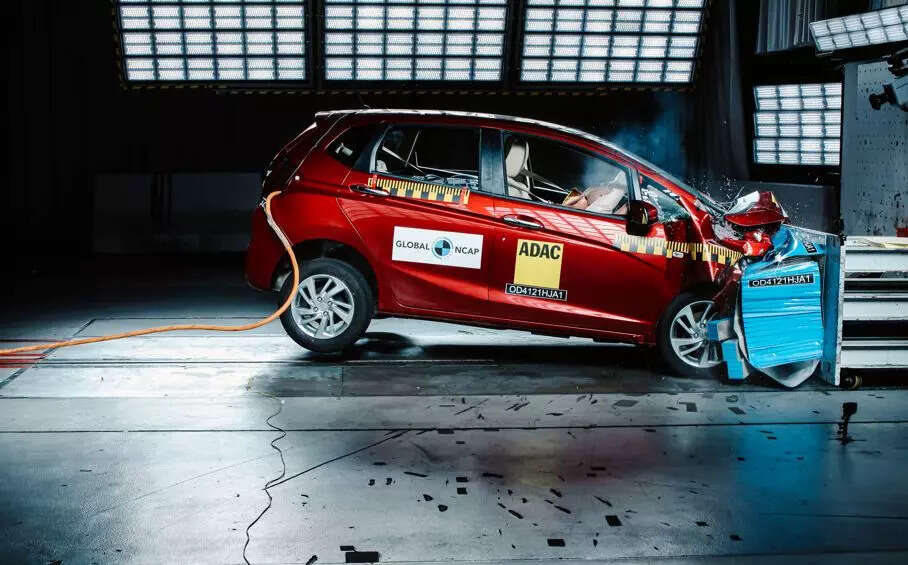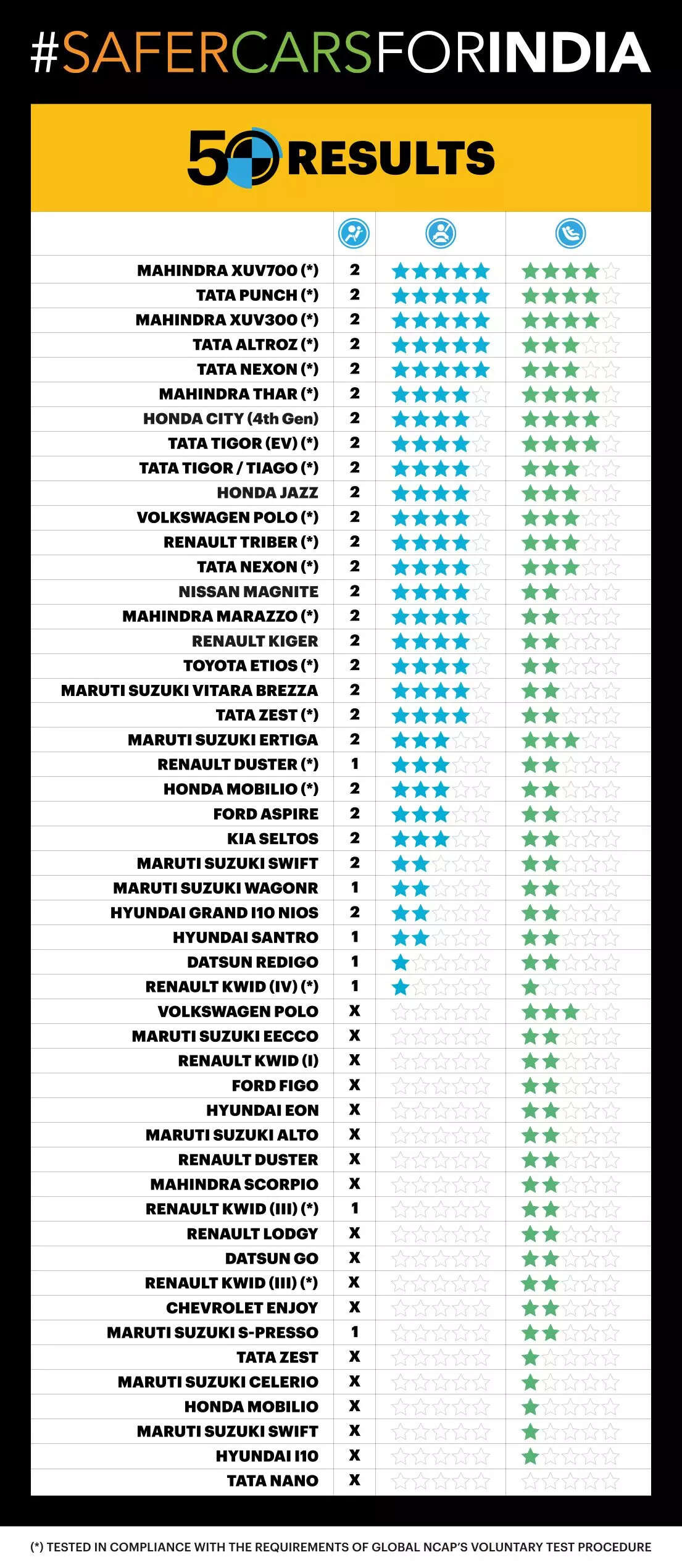
The Global New Car Assessment Programme (GNCAP) will start crash testing cars in India, if things go as planned. The safety watchdog, under The Towards Zero Foundation, a UK-registered charity, looks to start crash testing cars in India by the end of 2023. “India has a good testing infrastructure, which wasn’t there when the Safer Cars for India campaign was started in 2014″, David Ward, executive president, The Towards Zero Foundation, told ETAuto.
India has a good testing infrastructure, which wasn’t there when the Safer Cars for India campaign was started in 2014David Ward, Executive President, The Towards Zero Foundation
GNCAP has so far tested 50 cars from India, under its Safer Cars for India campaign which started in 2014. The latest round of tests, results of which were released on Tuesday, involved Honda’s Jazz and City, Renault Kiger, and Nissan Magnite. All the cars were tested at Germany-based motoring association ADAC’s technical centre located near Munich.
Of the 50 cars, 19 were voluntarily offered by OEMs to be crash-tested. The rest were bought and airlifted to Germany for the test. GNCAP says approximately EUR3.2 million have been spent for the Safer Cars for India programme so far. The transfer of testing to India will save significant costs for the FIA Foundation and Bloomberg Philanthropies-funded safety watchdog.
Ward said accreditation of a testing agency, and appointment of a technical leader are yet to be done to facilitate the transfer of the crash testing activities to India. Natrax, an advanced automotive testing and certification centre under the government’s National Automotive Testing and R&D Infrastructure Project (NATRiP) could be a prospective agency.

Ward, who has had discussions with the Indian road transport ministry, is in favour of a permanent new car assessment programme in India. There has been talks about it, but there are no concrete plans on it yet. However, there’s a plan for a regime of safety rating in India.
That could be similar to the mandatory fuel efficiency information display for every model in a car showroom. The government is already taking the regulations route to enhance the safety quotient of Indian passenger vehicles. After introducing new crash safety regulations for all new cars from 2017. It has now proposed to make 6 airbags, and three-point safety belt for the middle passenger in the rear seat to be mandatory. Automatic Emergency Braking (AEB), and Electronic Stability Control (ESC) are expected to be made mandatory next.
The introduction of an India-specific NCAP would also increase localisation of safety components, argued Ward. “There are indirect benefits for suppliers to localise,” he said. As for a safety rating labelling norm, Ward cited the example of Malaysia, where it has been made mandatory. Adopting a similar step in India would contribute to safer mobility, and consumer awareness too.
The crash tests by GNCAP, and the marketing campaigns by some OEMs like Tata Motors, Mahindra & Mahindra, winner of 5-star ratings, have also contributed to consumer awareness.
The Safer Cars for India programme may continue for another couple of years. GNCAP is learnt to have secured funding for its activities at least till 2025. Another round of tests under the ‘Safer Cars for India’ campaign may not be far away. Would GNCAP test 100 cars in all under the campaign? “That would be nice. We want to keep going as long as we are useful,” Ward said.
Also Read:















